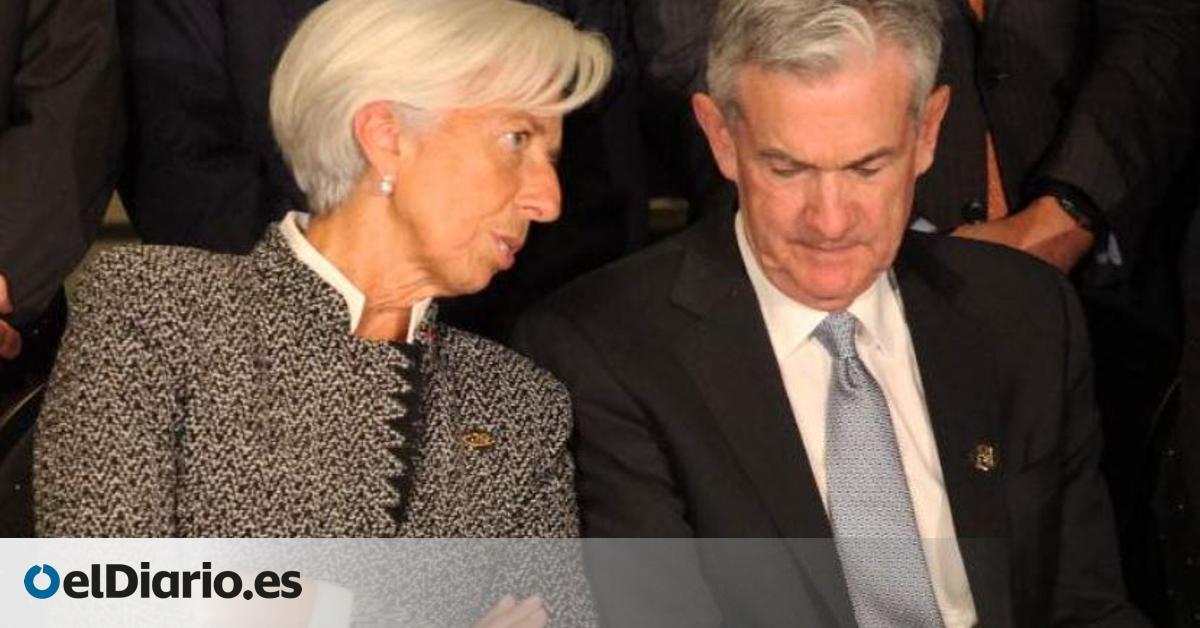
The Year We Live Dangerously, the title of the award-winning Australian film inspired by the 1965 uprisings against the Sukarno regime in Indonesia, could define the state of permanent tension that the world economy has registered in 2023. In the last four years, with The Great Pandemic and the irreverent post-Covid business cycle as backdrops, commercial and logistical disruptions have emerged, wars in Europe such as the one in Ukraine, or the conflict in Palestine, or price escalations in energy, mineral and food raw materials .
But 2023 has been the year that has generated the most signs of active resistance in these four years. Even with phenomena that escaped the predictive capacity of the markets such as the collapse of several medium-sized American banks in spring and whose contagion also affected the emblem of Swiss finance -Credit Suisse- or complex management such as inflationary spirals. The former were defeated in a few months and the latter with more effort and pain, throughout the year, although the prices of the industrialized orbit are not as at bay as the market demands. falcons of their central banks.
The IMF in its double semiannual diagnosis – in spring and autumn – has reviewed this exercise in resilience with a double degree of surprise and optimism. In essence, because the labor markets, especially in the US but also in Europe, have supported the adjustments and revivals of workforces with flexibility and dynamism. With more nuances, the real estate sector has adapted to the credit restrictions caused by the highest interest rates since the turn of the millennium and, except for the deep corrections in the Scandinavian markets, it has breathed a sigh of relief from the twelve months of turmoil and uncertainty of 2023 .
However, the vitality of labor – without significant increases in salaries in high-income economies – and real estate – without major falls in sales and rising prices – should not make the economic authorities complacent. This is what the Fund’s leaders believe, as they detect problems in both areas. Among others, the upcoming changes in teleworking or in sales in working weeks, the probable increase in the price of raw materials in constant oscillation, the disappearance of savings accumulated by families that will end up affecting consumption or the secondary effects of a inflation still uncontrolled.
“Short-term risks are not going to disappear at the turn of the year,” warns Martin Wolf in his column in Financial Times. Quite the opposite. New manifestations of this resilience will be necessary to protect the situation from unresolved geopolitical, economic, monetary and financial shocks. Short-term budget stability must be generated to “pay the bills” of the “indiscriminate fiscal expenditures” that, according to the IMF, should have been deployed to respond to Covid-19. But also with long-term measures that correct the growing inequality gap that still separates the rich from the poor.
This resilient power must appear in an economy like China, with tensions in its housing sector that has had an impact on local and state accounts and has deteriorated the solidity of its credit market. Also in the US, where the accumulation of savings has dissipated without the Red light of inflation despite the most intense and rapid rise in rates since the 1980s, which makes a scenario of price control without recession unlikely – although still possible. With a report from the Federal Reserve that registers an inflation of 2% between July and December and the market consensus divided between visionaries of the soft landing that the Treasury proclaims and those who consider a recession inevitable at the end of the current American economic cycle.
The return to a certain fiscal discipline should contribute to alleviating deficits and debt and lowering the immediate maturities of emerging countries, the most affected by the rise in money prices and the revaluation of the dollar in 2023. And, in a way, to stop some than another shock in the stock market or in the bond markets, warns Wolfe.
A traffic full of barriers at the turn of the year (…)
Activity in the year that is coming to an end continues 3% below its pre-pandemic level. This delay is more adverse in emerging markets than in high-income powers. But the most affected are the developing countries that accumulate increases in extreme poverty – the World Bank warns – of 95 million people between 2019 and 2022. On a planet with record heat records and without major alliances against climate change that the increasingly large figures of damages and compensation for meteorological catastrophes.
As if that were not enough, the phase with abnormally high interest rates will continue, despite the declines expected by investors in 2024 in cases of relative geopolitical calm, and without new vestiges of industrial and technological protectionism on the global stage.
The revised data on the dynamism of the US GDP for the third quarter – from 4.9% to 5.2% – is nothing more than a demonstration that “recessions begin after recent buoyant growth,” predicts Rob Arnott, founder of Research Affiliates. In line with Macquarie strategists, who leave another threatening signal about the largest economy on the planet: the distortion between GDP, which measures productive value, and Gross Domestic Income (GDI, in English) which calculates the income generated by the economy and is more sensitive to perceiving contractionary phases. This indicator has not detected a gap of such magnitude since 2007, the year that preceded the credit collapse caused by the banks.
The weakness of the US and China and the weakness of Europe leads Citi experts to ensure that “the resilience of the global economy faces growing concerns in 2024.” Nathan Sheets, its chief economist, emphasizes that monetary policy is at a point that encourages a halt in activity even when inflation approaches its control levels, as has already happened in the euro zone, although the two superpowers They still maintain their rates “in vigorous positions.” To the point that they will boost global GDP up to 2.5% in 2023, half a point above the initial estimate for the year. Although they reduce their prediction to 2% in 2024.
“Most of the industrialized space will slow down” with contractionary periods among the euro partners -from autumn to spring-, in the United Kingdom, where it will expand in the first three quarters of 2024, and in the United States, which will begin its Red numbers between April and June. In his opinion, the severity of the debacle can be seen in the fact that, if the contribution of Chinese GDP is excluded, throughout the first three quarters of 2024 growth will be just half a point due to the “reasonably positive” behavior of the markets. emerging.
(…) with signs of new geopolitical tensions
This scenario of extreme slowdown – Sheets clarifies – would only occur, furthermore, in the event that the monetary authorities “break with their spectacular inertia of rate increases and without new geopolitical tensions.” If this were not the case, volatility with an investment risk premium would appear in the capital markets and could trigger escalations in energy prices that would result in another shock adverse supply and would trigger inflation.
In 2024, the American GDP will grow nine tenths; the Chinese 4.6%, below the official objective of 5%; the eurozone losing one tenth in the final stretch of 2023 and taking off in the summer until reaching growth “something above 1%, according to Paschal Donohoe, president of the Eurogroup; and the British without a pulse – “close to zero” – as the Bank of England ventures.
“The abundance of geopolitical risks, with the war conflicts in Ukraine and Gaza at the forefront, but also the wave of elections in 2024, which could dramatically alter the economic and investment horizon, cannot be excluded from any predictive analysis,” warns the person in charge. of Research and Investments of the firm ICG, Nicholas Brooks. The analyst favors a palpable loss of the resilience shown by the global economy in 2023.
Next year there will be elections in such relevant countries as Taiwan, Indonesia, India, the US, the European Parliament and, very presumably, in the United Kingdom.
Along with this first-order geostrategic cocktail, ICG also has an impact on the restrictive credit conditions, the obstruction to liberalizing sectors and economies, the excess deficits and debt contracted in the post-Covid cycle and a series of unresolved structural problems. Brooks cites the weight of mortgages in the balance of household income and the decrease in income and profits of certain segments of activity.
Its positive readings highlight banking robustness, the resumption of the manufacturing pace after inventories evaporated, and the possibility that China will establish more proactive monetary and fiscal policies to spur its activity.
Fitch also announces that global growth will fall sharply in 2024, although it rejects two consecutive contractionary quarters in the US. Essentially, because the widespread effect of the Fed’s rising money prices, the damage to the economy from the real estate collapse in China and the severity of the European and British paralysis remain to be seen.
Meanwhile, Morgan Stanley advises investors “maximum caution” when choosing emerging market securities and commodity assets and “express attention” to geopolitical conflicts and central bank policies, because “we are in an imperfect world” of stagflation. and high stock market risks.
Source: www.eldiario.es

